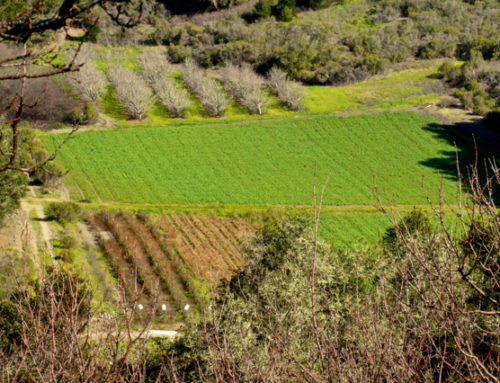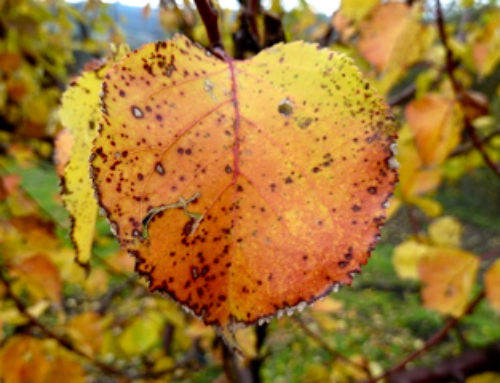 Last week Juan called me, alarmed, because one of our main wells was not pumping water. We had just transplanted leeks and celery early that morning and temperatures were forecast in the mid-eighties. It felt as if someone pushed my Survival Instinct Alert button; at that moment, nothing was more important than to get the water flowing again. A worst case scenario would be that the pump motor or something in the well shaft got damaged; luckily this time the cause was only minor – just a burned-out fuse. It was a stark reminder, however, of how fragile our entire farming system is. We have grown foolishly accustomed to water that is available whenever we want it. The vast agricultural landscapes of California should remind everyone that water is our single most precious commodity. Our ability to manipulate it by pumping, damming, storing and rerouting it has allowed us to convert an otherwise arid landscape into a highly-populated, abundant food-producing region. Water, not oil, is what allows us to farm along these narrow strips of precious fertile soil hugging the Pacific coast. We live on borrowed time as we pump water from our rivers and underground aquifers to grow crops that wouldn’t survive here otherwise. Water conservation is essential if we want to preserve agriculture.
Last week Juan called me, alarmed, because one of our main wells was not pumping water. We had just transplanted leeks and celery early that morning and temperatures were forecast in the mid-eighties. It felt as if someone pushed my Survival Instinct Alert button; at that moment, nothing was more important than to get the water flowing again. A worst case scenario would be that the pump motor or something in the well shaft got damaged; luckily this time the cause was only minor – just a burned-out fuse. It was a stark reminder, however, of how fragile our entire farming system is. We have grown foolishly accustomed to water that is available whenever we want it. The vast agricultural landscapes of California should remind everyone that water is our single most precious commodity. Our ability to manipulate it by pumping, damming, storing and rerouting it has allowed us to convert an otherwise arid landscape into a highly-populated, abundant food-producing region. Water, not oil, is what allows us to farm along these narrow strips of precious fertile soil hugging the Pacific coast. We live on borrowed time as we pump water from our rivers and underground aquifers to grow crops that wouldn’t survive here otherwise. Water conservation is essential if we want to preserve agriculture.
Every season we grow more than 50 different crops, and now that most of our spring plantings are in the ground, watering is a big job. Knowing when and how much water to apply to each crop is both an art and a science. So many variables to consider, such as soil type, specific crop requirements, delivery systems and weather patterns. Water is pumped from wells – some at rates of 200-300 gallons per minute – through an intricate system of tanks, pumps, pipes, hoses, sprinklers and valves, to virtually every plant in each field. We average putting about an inch of water on every crop per week, although requirements vary from crop to crop. For example, spinach may need more but green beans much less. Also, a mature crop will need more water less frequently, whereas a recently planted crop needs less water more frequently. Cool weather crops such as broccoli, cauliflower, lettuce, and most leafy greens, like to be irrigated with above-ground movable aluminum pipe sprinklers, while crops such as strawberries, tomatoes, peppers, squash, cucumbers, and eggplants we drip irrigate. A (very) few crops we don’t irrigate at all, such as our dry-farmed tomatoes and our established Pippin apple orchards.
With the help of a USDA grant, we are evaluating how new technologies for both drip and sprinkler irrigation can help reduce our current water budget. According to our records, last year we used approximately 62 acre-feet of water to raise our crops. Imagine a football field (an acre is only slightly smaller) covered 62 feet high with water. That’s a lot of water! More than 80 percent of our water for the farm comes from groundwater. The rest comes from rainwater collected in ponds.
Since the 1850s, when the first settlers moved into the area and began to farm, agricultural development has expanded from potatoes, grains, apples, and a variety of truck crops to a high value, predominantly berry production system. Today, about half (35,000 acres) of the basin is in irrigated agriculture. Over-pumping concerns were already identified back in the ’50s, and today everybody is in agreement that the basin is over-drafted, causing saltwater intrusion along the coastal areas where land is most intensely farmed.
Over the last few years, the Pajaro Valley (where our farm is located) has become a battleground on the issue of water, creating deep rifts and mistrust among many members of the community. It is increasingly important to educate the public about the decisions that need to be made and actions that must be taken, in order to prevent special interests from calling the shots and squandering this precious resource for short-term monetary gain. If farming is to survive we have to adopt water saving technologies, implement water conserving practices, and promote watershed-based policies that manage water resources equitably for all.





